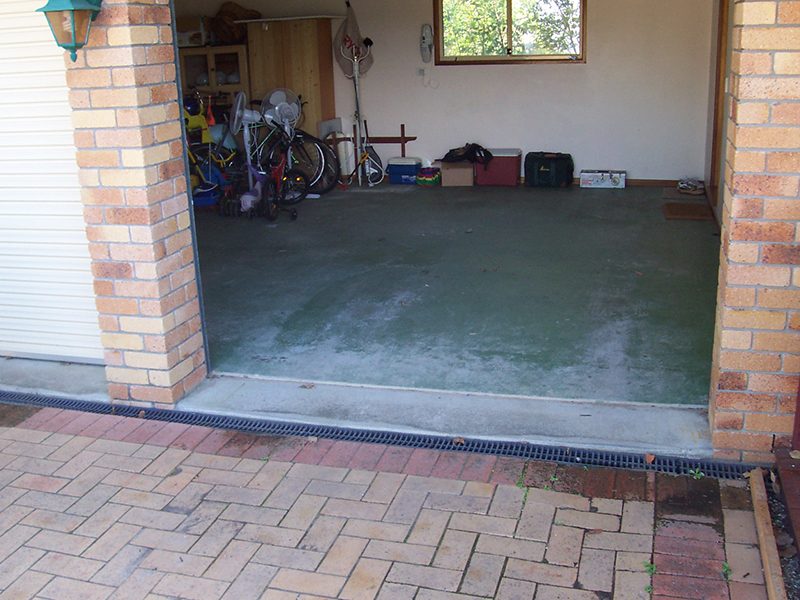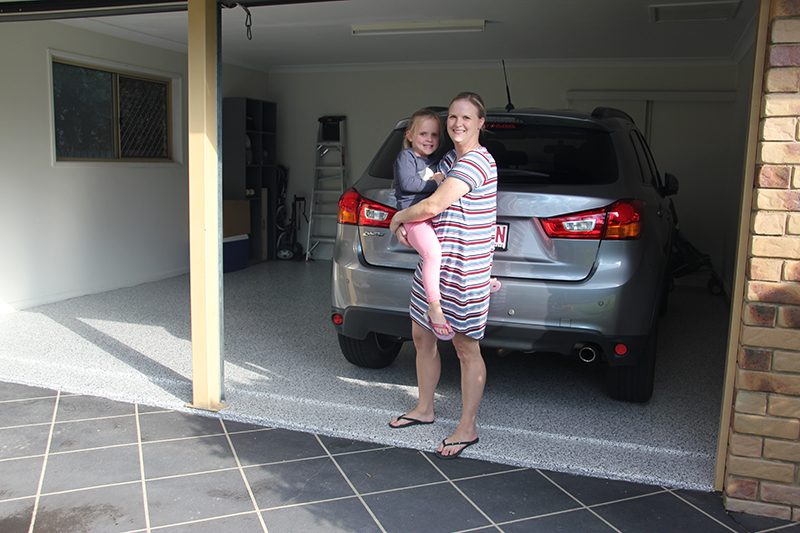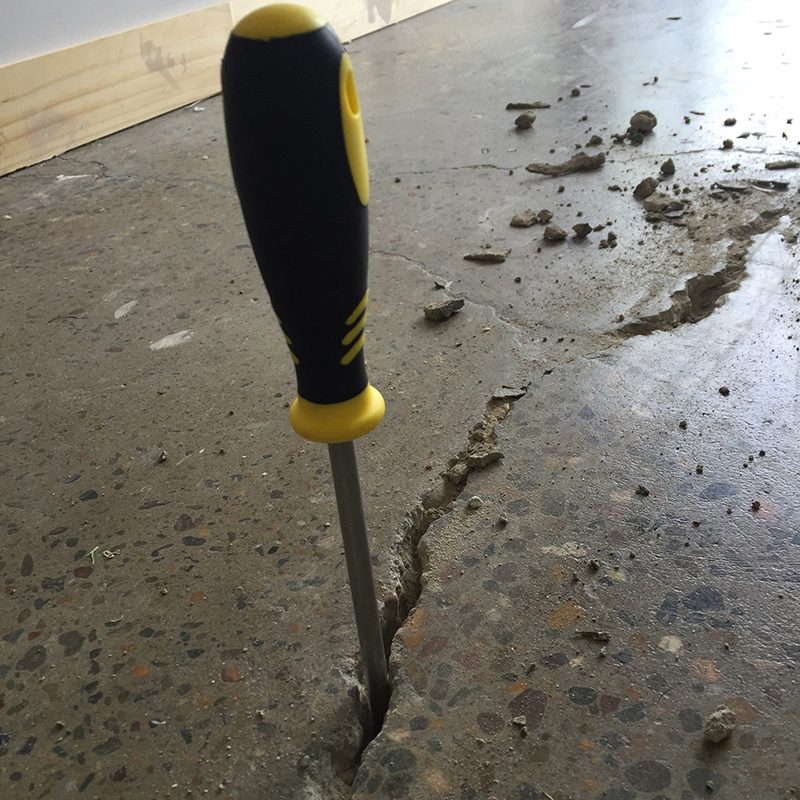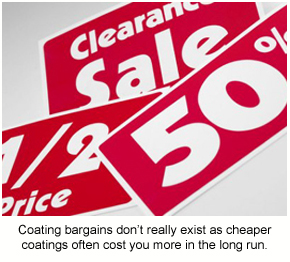Cost is understandably a big focus for many homes and businesses looking to get a new floor and epoxy floors are no different. How much does epoxy flooring cost? Is it $20 per square metre? $50? $120 or even more?
The answer is you can get a floor from anywhere within that range and above, however just as the price can vary dramatically, so too can the quality of the floor you end up with.
What about epoxy floor coatings from an installers point of view? Is there much difference in the quality of the cheaper coatings compared to the more expensive ones? If so, how does it effect the products you select and use?
All these questions and more are answered in our cost of epoxy flooring tips below.
As with any floor, there are a few things owners, builders and specifiers need to consider when they’re weighing up epoxy flooring cost.
If you really wanted a cheap floor, you could buy a tin of floor paint at your local hardware store for $10 per litre and apply it yourself. But how would it look? How long would it last? Would you be better off paying more for a floor installed by a professional?
The answer is it doesn’t really matter as long as you know what you’re in for. The cheap floor paint won’t last as long as an epoxy floor and it probably won’t look as good if you DIY, but that might be ok. For example, your budget might be a little thin, or you might be selling and just want to freshen things up without spending too much.
Problems only occur when expectations don’t line up with what you pay for. In other words, you can’t put down a cheap garage floor paint and expect it to look like new five years later. If performance and longevity is the goal, you’re much better off forgetting the cheap price and seeking high quality products installed by professionals.

If you decide against the cheap flooring described above and want a good-looking finish that lasts, it automatically puts you into a certain price bracket. For ballpark figures, a quality garage epoxy floor installed professionally in a double garage is probably going to cost somewhere between $55-65 per square metre, while a metallic finish in your home or business typically starts around $100 per square metre.
Some may instinctively explore outside the lower rungs of these brackets to save a few dollars, but is it worth it? What risks are you now taking for the lower price? Is it worth paying more for a quality floor you absolutely love the first time? A more expensive floor that lasts 10 years will end up costing less than a cheap floor that needs to be re-done after three.

While some indicative square metre costs of epoxy flooring have been given in these tips, you should keep in mind that your current floor will have a big say in what the actual cost will be.
While new concrete slabs might only need a diamond grind in preparation for an epoxy floor, most existing surfaces will need more work and higher-than-expected costs can be quoted if the condition of your floor isn’t suitable for coating. This could mean extra sealing, flattening, levelling, waterproofing and/or crack repairs are required.
Of course a very common scenario in this context is the idea of applying an epoxy floor over tiles. In some cases where the tiles are damaged or loose it’s better to remove them first, which can add somewhere around $35 per square metre to a project before you get started. Even if you can go over them, you’ll need to flatten them first and that can also add significant cost to your project.

The epoxy flooring industry has come a long way in many respects, but it remains a price-driven market and the lure of a bargain, it seems, is still too good to refuse.
The truth is, when it comes to epoxy product selection most of us place far too much emphasis on the cost we get it for. Fair enough if the coatings in question are genuine equivalents and more than capable of doing the job at hand – there are certainly no problems there. Problems do arise, however, when price becomes such a focus that inferior, unsuitable products are used in the hope of saving a few bucks.
Why is there such a pull towards the lowest epoxy flooring cost in the first place? Maybe it's a legacy of solvent-borne products with
only 30% solids, or perhaps it’s just a quirk of human nature to get as much as possible for as little as possible? Whatever it is, it’s a
strong force and one that needs to be addressed if the industry is to reach its full potential.
So, what’s the answer? I think a big part of it lies in this favourite quote of mine: “By only looking at the price of a product, you can
miss the true value". In other words, what looks like a bargain on paper often ends up costing you far more down the track anyway when
the reasons for a low price rear their ugly head. In an epoxy flooring context, that’s usually stuff like amine
blushing,
bubbles, premature
failure,
repairs etc.

If all that makes sense, and you’re convinced that coating value, not coating price, is what we should be searching
for, how do you actually find it? How do you know what products represent good value and aren’t simply dressed up with a low cost? This task
becomes a little easier when you consider the following:
A more expensive product might be a turn-off to begin with, but if it doesn’t play up all the time, requires no primers, needs fewer coats,
lasts longer and protects better, the actual cost over the full lifespan of the product will be far less.
To finish, I’ll leave you with something to keep in mind when seeking coating value. Just ask yourself one question before you buy: "Will it
cost me more to do it properly now with a better product, or do it cheaply and come back again shortly?"
Real World Epoxies has formulated, manufactured and supplied high-quality epoxy flooring systems and products for more than two decades. We stand behind our products because we only use proven, high-quality materials that we know will perform as expected. You can trust our epoxy supplies for your epoxy flooring project.
Let us help you with your epoxy flooring needs when you fill out one of our contact forms or call us on 1300 EPOXIES (1300 376 943).
To help build a strong resin flooring industry that sits alongside timber, carpet, tiles and vinyl as a mainstream flooring option.
To eliminate preventable failures
that hurt the resin flooring industry
and prevent it from reaching its full potential.

